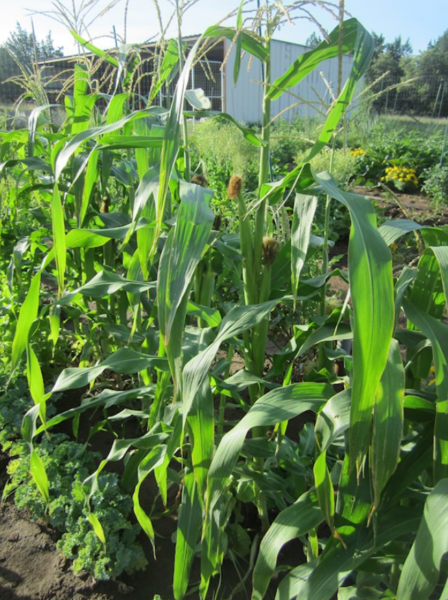Not everyone has a grain mill and not everyone wants to have a grain mill but some of these things I find so interesting and want to share for those who are interested.

Several years I grew dent corn in Texas and let it dry on the stalk. I left there in 2020 and had not grown corn it the last three years I was there so I probably grew it from 2013 to 2017. Vince would remove all the dried corn from the cobs and I stored it in a zipper bag. We sometimes had Glass Gem corn, sometimes we had blue corn, sometimes we had yellow corn but I always made it into grits or cornmeal. It was probably back in January that I used all the corn I had and bought cornmeal.
Making the Anadama Bread that Vince loves takes 1 cup of cornmeal and I make that bread once a week. I make cornbread once a week. Probably once a month, I make Mexican cornbread. I probably use a bit more than 3.5 pounds of cornmeal each month. Cornmeal has been hit and miss in our area. Walmart had all kinds of cornmeal mixes the other day but no plain cornmeal.
My preference is “unbolted” or cornmeal that still has the husk and germ. Try finding that in the grocery store even before shortages! That’s the reason I started grinding my own. This site has a blurb about the difference. My salt rising bread recipe calls for corn that has not been degerminated. I’ve never tried using degerminated cornmeal so I don’t know if that would ruin it or not.
Daily Delish has this explanation of the difference in degerminated vs. whole cornmeal.
“What does degerminated cornmeal mean?
Most commercial cornmeal is made from either yellow or white dent corn and milled via steel rollers, which gives it a uniform texture. It’s also degerminated, meaning the nutritious, oily germ and bran are removed in processing. This makes it shelf stable.
What is enriched degerminated?
ENRICHED MEANS THAT NUTRIENTS THAT WERE LOST DURING PROCESSING HAVE BEEN ADDED BACK INTO THE PRODUCT. ALL QUAKER CORN MEAL IS ENRICHED WITH THIAMINE NIACIN RIBOFLAVIN AND IRON.
Is all cornmeal Degermed?
Most cornmeal has been degermed, with oil from the germ put to use in making vegetable oil. Some, but not all, of the nutrients lost when corn is degermed are restored in enriched cornmeal.”
The reason the corn is degerminated is to extend the shelf life. The “oily” germ is the weak link when it comes to shelf life.
There are all kinds of numbers out there as to how long corn, degerminated cornmeal and cornmeal with the germ will last. Here’s what I go by:
Degerminated cornmeal – At least six months past the “best by” date; two years past the “best by” date if kept in the freezer.
Cornmeal with the germ – Not long after the “best by” date; six months past the “best by” date if kept in the freezer.
Dried corn – 25 years if store in sealed containers, with oxygen absorbers and kept cool and in a dark room.
What about the cost? Walmart seems to be completely out of plain cornmeal but here are the prices listed on their website:
- Walmart’s Great Value brand yellow cornmeal – $2.36 for 80 oz. (.03/oz.)
- Quaker yellow cornmeal – $2.08 for 24 oz. (.086/oz.)
The Mennonite store near us sells theirs for 89 cents a pound, or .056/oz.
Azure Standard: Organic cornmeal with the germ – $21.29 for 50 lbs. or 800 oz. (.027/oz.), which is less than Walmart’s brand of cornmeal.
I’m assuming that 1 pound of dried corn equals 1 pound of cornmeal . . make sense? I’ll agree that there is a cost involved for milling the corn myself – the cost of the mill which was purchased in 2015, a bit of electricity, a couple of food grade 5 gallon buckets with Gamma Seal lids (which we re-use), oxygen absorbers.
Another good reason to buy the dried corn is that I can mill it into corn flour, coarse cornmeal, fine cornmeal and grits.
It’s a win/win for the way we do things.
I currently do not have any cornmeal that has not been degerminated but as soon as I get some, I’m making salt rising bread. Here’s the recipe I use.

Laura says
Did you grow dent corn in Missouri or Texas? The dates seem off.